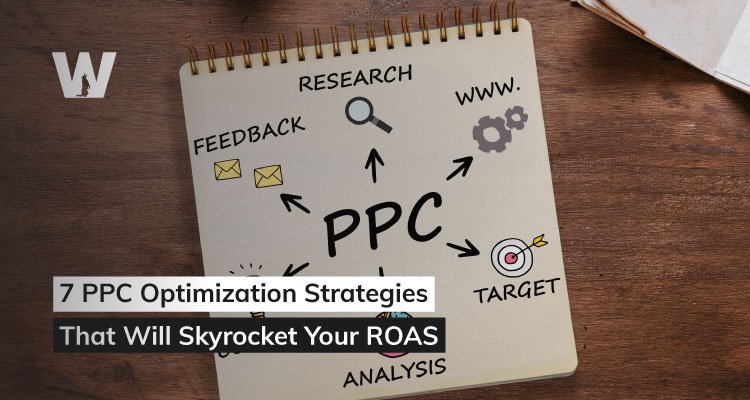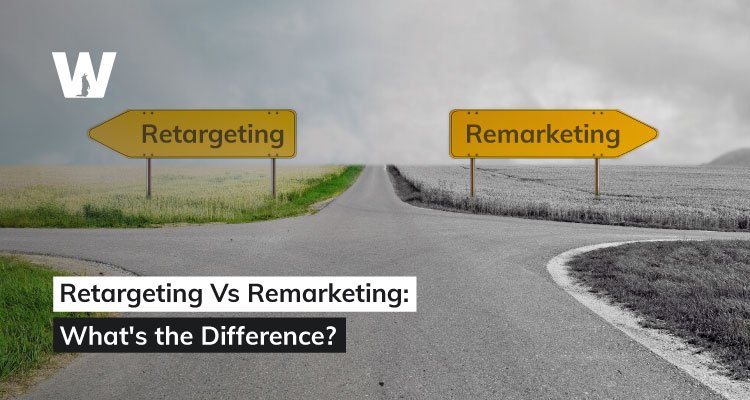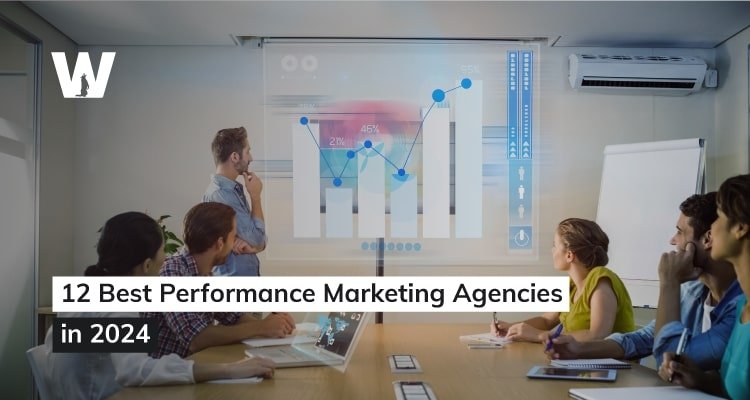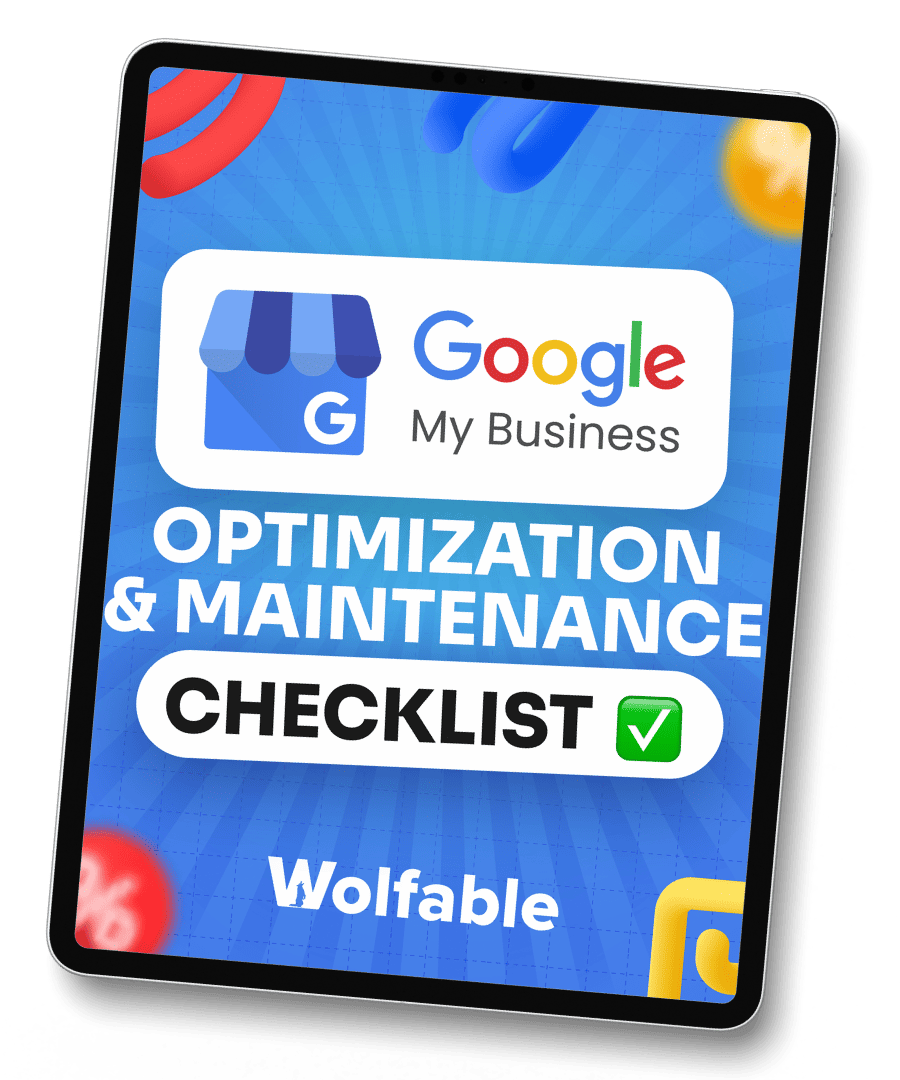Wraps up in 9 Minutes
Are you struggling to make your PPC campaigns profitable?
You're not alone.
Pay-per-click advertising can be a powerful tool to drive traffic and conversions, but it's also easy to burn through your budget without seeing the results you want.
That's where ROAS comes in.
ROAS, or Return on Ad Spend, is the holy grail of PPC advertising. It tells you how much revenue you're generating for every dollar you spend on ads.
But here's the thing! — Optimizing your PPC campaigns for better ROAS isn't always straightforward.
There are countless variables to consider, from keyword selection to ad copy, and landing pages to bidding strategies. It can feel overwhelming, especially if you're new to the PPC game.
In this post, we're going to walk you through 7 powerful PPC optimization strategies that will help you boost your ROAS and get more bang for your advertising buck.
Plus, we'll throw in a handy checklist to keep you on track.
What is PPC Optimization?
PPC optimization is all about making your pay-per-click ads work better for you.
When you optimize your PPC campaigns, you're trying to get more clicks, more customers, and more sales, all while spending less money.
Think of it this way: PPC optimization helps you get the most bang for your buck. It's about showing your ads to the right people, at the right time, with the right message. When done well, PPC optimization can help you attract more potential customers, convert more of them into actual buyers, and ultimately make more money from your ad spend.
What Does PPC Optimization Consist of?
PPC optimization isn't just one thing – it's a whole bunch of different tasks and strategies working together. Here's what it usually includes:
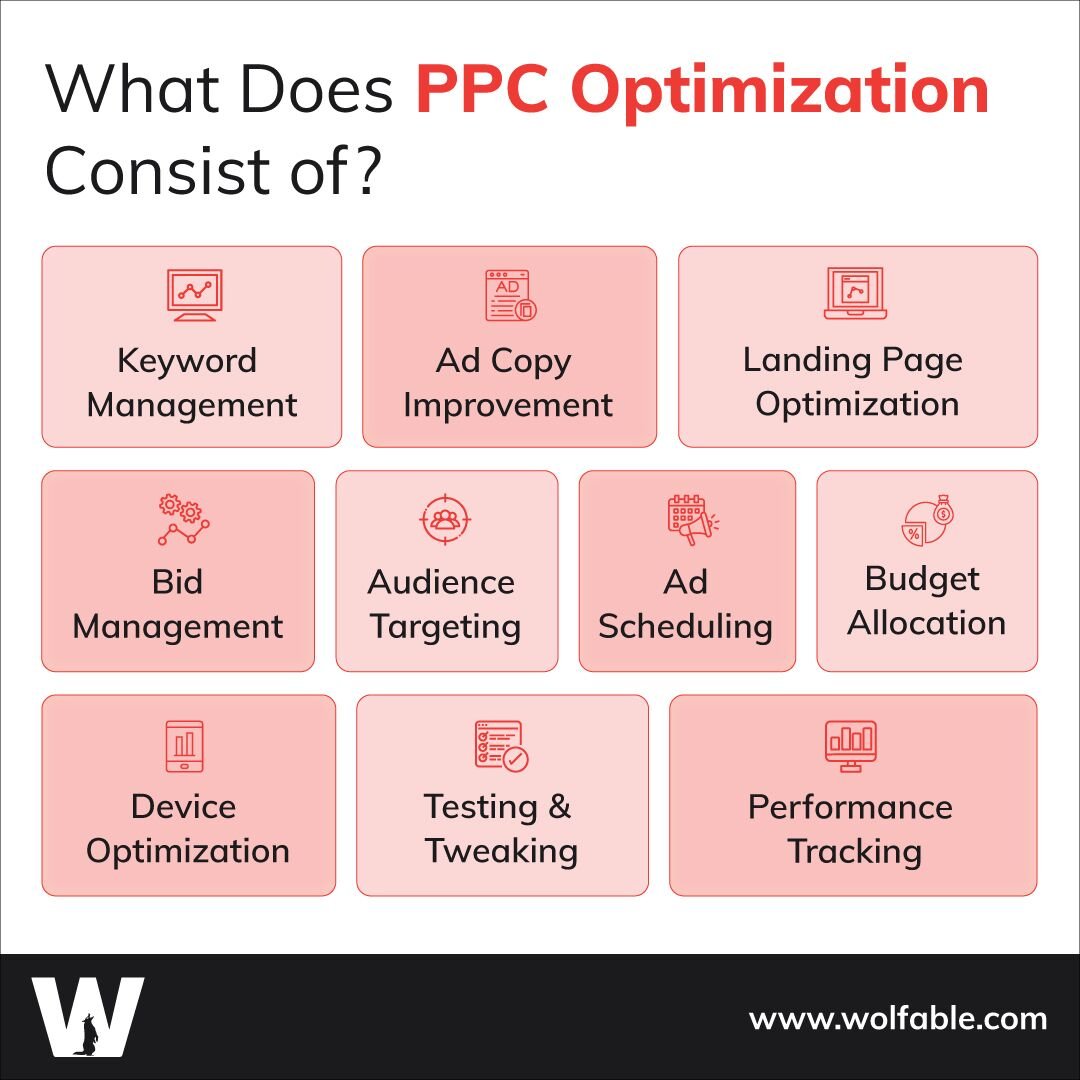
- Keyword management: This means picking the best words and phrases for your ads, and getting rid of ones that aren't working.
- Ad copy improvement: Writing better ads that make people want to click.
- Landing page optimization: Making sure the page people land on after clicking your ad is designed to turn them into customers.
- Bid management: Deciding how much you're willing to pay for each click, and adjusting this based on performance.
- Audience targeting: Showing your ads to the right group of people who are most likely to be interested in what you're selling.
- Ad scheduling: Choosing the best times to show your ads.
- Device optimization: Making sure your ads work well on computers, phones, and tablets.
- Budget allocation: Spreading your money across different campaigns in the most effective way.
- Testing and tweaking: Trying out different versions of your ads and strategies to see what works best.
- Performance tracking: Keeping a close eye on how your ads are doing and making changes based on the data.
All these pieces work together to help you get better results from your PPC campaigns.
Remember, it's an ongoing process – there's always room for improvement in PPC!
What is ROAS & Why Is It Important?
Before we jump into the strategies, let's make sure we're on the same page about ROAS.
ROAS stands for Return on Ad Spend, and it's a metric that measures the revenue generated for every dollar spent on advertising. To calculate it, you divide your total revenue from ads by your total ad spend.
For example, if you spent $1,000 on ads and those ads generated $5,000 in revenue, your ROAS would be 5:1 (or just 5). This means you're making $5 for every $1 you spend on ads.
Compared to metrics like click-through rate (CTR) and cost per click (CPC), ROAS gives you the big picture. It tells you whether your ads are actually making you money, not just generating clicks or impressions.
When it comes to setting ROAS goals, there's no one-size-fits-all answer. A good ROAS depends on your industry, profit margins, and overall business goals.
As a general rule, an ROAS of 4:1 is considered good for many businesses, but you might need higher or lower depending on your situation.
The key is to set a realistic goal that allows your business to be profitable while still leaving room for growth.
7 PPC Optimization Strategies to Boost ROAS
Now that we've covered what PPC optimization and ROAS mean, let's dive into the specific strategies that can help boost your ROAS.
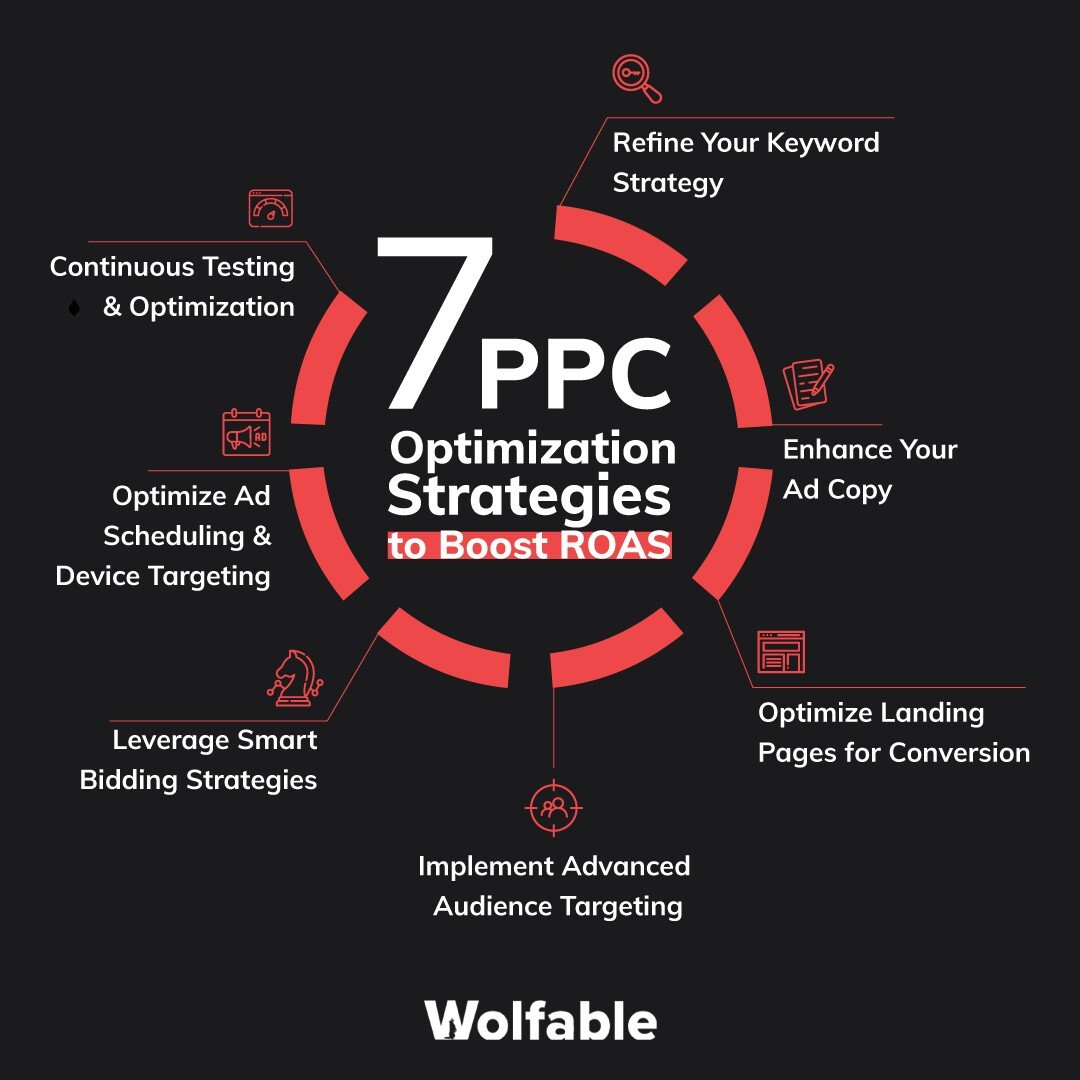
1. Refine Your Keyword Strategy
Keywords are the foundation of any successful PPC campaign.
They determine when and where your ads show up, so getting them right is crucial.
First things first: you need to conduct thorough keyword research. This isn't a one-and-done task; it's an ongoing process. Start by using keyword research tools like Google's Keyword Planner, SEMrush, or Ahrefs.
These tools can help you discover new keyword ideas and estimate search volumes.
Apart from this, you should also keep a close eye on what your competitors are doing. What keywords are they bidding on? Are there any gaps you can exploit?
Once you have a list of potential keywords, it's time to think about long-tail keywords. These are longer, more specific phrases that might have lower search volumes but often come with higher intent.
For example, instead of bidding on "running shoes," you might bid on "best running shoes for flat feet."
People searching for long-tail keywords are often closer to making a purchase, which can lead to a better ROAS.
2. Enhance Your Ad Copy
Great keywords are important, but they're only half the battle.
If your ad copy doesn't grab attention and compel people to click, even the best keywords won't save you.
So, how do you create ads that actually convert?
Well, you need to look at your headline. After all, these are the first things people see, so make them count. Ideally, you should use strong, action-oriented language that speaks directly to your audience's needs or desires.
Your ad description, on the other hand, is where you can really sell your product or service. Therefore, you must focus on the benefits, not just the features in your ad descriptions.
Most importantly, you should always include a clear call-to-action (CTA) that tells people exactly what you want them to do.
Lastly, don't forget about A/B testing. Create multiple versions of your ads with different headlines, descriptions, or CTAs, and see which ones perform best. Over time, you'll learn what resonates with your audience and can refine your ads for better performance.
3. Optimize Landing Pages for Conversion
Let’s assume you’ve got great keywords and compelling ads. People are clicking through to your site.
But if your landing pages aren't up to scratch, all that hard work could go to waste.
This is why you must ensure there’s a strong message match between your ads and your landing pages.
For example, if your ad promises a 20% discount on running shoes, your landing page better prominently features that discount and those shoes. Anything else will just confuse and frustrate visitors, leading them to bounce.
Apart from this, your copy should be clear, concise, and persuasive. Focus on the benefits of your product or service, not just the features. Use bullet points to break up text and make key points stand out.
Finally, Page load speed is crucial, especially on mobile devices. A slow-loading page can kill your conversion rate faster than you can say "bounce." For this, you can use tools like Google's PageSpeed Insights to check your load times and get suggestions for improvement.
Remember, your landing page is where the conversion happens. So, test different layouts, ad copy, and CTAs to see what works best for your audience.
4. Implement Advanced Audience Targeting
Now that we've covered the basics, let's dive into some more advanced strategies. One of the most powerful ways to improve your ROAS is through smart audience targeting.
After all, showing your ads to the right people is crucial for maximizing your ad-spend efficiency and boosting conversions.
Google Ads offers a variety of audience targeting options. Let's check them out:
- Demographic targeting: This lets you target based on age, gender, parental status, and household income.
- Affinity audiences: These are people with specific interests or hobbies.
- In-market audiences: These are people actively researching or planning to purchase products or services in a specific category.
- Custom intent audiences: You can create these based on keywords, URLs, and apps your ideal customer might use.
- Remarketing lists: These are people who have previously interacted with your website or app.
5. Leverage Smart Bidding Strategies
Bidding is where the rubber meets the road in PPC advertising.
It's also an area where a little automation can go a long way.
Smart bidding uses machine learning to optimize your bids in real-time and considers a wide range of auction-time signals. This can help you get better results without constantly tweaking your bids manually.
Google Ads offers several smart bidding strategies:
- Target ROAS: This strategy automatically sets bids to help you get as much conversion value as possible at the target ROAS you set.
- Target CPA (Cost Per Acquisition): This sets bids to help you get as many conversions as possible at or below your target CPA.
- Maximize Conversions: This strategy automatically sets bids to help you get the most conversions within your budget.
- Enhanced CPC:This adjusts your manual bids up or down based on how likely a click is to result in a conversion.
So when should you use smart bidding?
It's generally most effective when you have a good amount of conversion data from which the algorithm can learn. If you're just starting out or have very low conversion volumes, you might want to stick with manual bidding until you've built up more data.
When you do implement smart bidding, start with conservative targets and gradually adjust them as you see results.
Remember, it can take some time for the algorithm to learn and optimize, so don't panic if you see some fluctuations at first.
6. Optimize Ad Scheduling and Device Targeting
Timing is everything in PPC, and so is reaching people on the right devices.
So how do you optimize your ad scheduling and device targeting for better ROAS?
There are plenty of ways. First of all, you should take a look at your performance data by time and day.
Are there certain hours or days when your ads perform better? Maybe you sell business software and see better conversion rates during work hours. Or perhaps you run a pizza delivery service and get more orders in the evenings and on weekends.
Use this information to implement ad scheduling.
For example, you can adjust your bids to be higher during peak performance times and lower (or even pause your ads) during slow periods. This helps ensure you're spending your budget when it's most likely to result in conversions.
For optimized device targeting, you should check your performance data and look at how your ads are doing on different devices – desktop, mobile, and tablet. You might find that your ROAS is much higher on one type of device than the others.
Based on this data, you can adjust your bids for different devices.
For example, if mobile is killing it for you, consider increasing your mobile bids. If the desktop is underperforming, you might lower those bids or even create separate campaigns for different devices to give you more control.
7. Continuous Testing and Optimization
Let’s face it. — PPC optimization is never truly "done."
The most successful advertisers are always testing, learning, and improving.
But how can you make continuous optimization a part of your PPC strategy?
Well, A/B testing is a crucial component of continuous optimization in PPC advertising. It allows you to systematically compare different versions of your ads, landing pages, or other elements to determine which performs better.
Here are some areas where you should be running regular A/B tests:
- Ad copy: Test different headlines, descriptions, and CTAs to see what resonates with your audience.
- Landing pages: Try different layouts, copy, images, or CTAs to improve your conversion rate.
- Bid strategies: Test different smart bidding strategies or manual vs. automated bidding to see what gives you the best ROAS.
When running tests, make sure you're only changing one variable at a time. This helps ensure that any difference in performance can be attributed to that specific change.
However, analyzing the test results is equally important.
For instance, a variation might get more clicks, but if those clicks aren't turning into conversions, it's not helping your bottom line.
Remember, the goal isn't to be constantly making big changes. Sometimes, the best optimization is a small tweak that leads to incremental improvement over time.
Comprehensive PPC Optimization Checklist
To help you stay on top of all these ppc campaign optimization strategies, we've put together a handy checklist.
Feel free to adapt this to your specific needs and schedule:
Daily Tasks:
- Check the account for any significant performance changes or issues
- Review and respond to any new search terms
- Adjust bids for keywords that are close to the first page or top of the page
- Pause any keywords that are spending without converting
Weekly Tasks:
- Review key performance metrics (ROAS, conversion rate, CPC, etc.)
- Adjust bids based on performance
- Pause underperforming ads or keywords
- Launch new ad variations for testing
- Check quality scores and work on improving low-scoring keywords
Monthly Tasks:
- Conduct a more in-depth performance analysis
- Review and optimize audience targeting
- Check landing page performance and plan optimizations
- Start new A/B tests (ad copy, landing pages, etc.)
- Review and adjust automated bidding strategies
- Analyze competitor activity and adjust strategy if needed
Quarterly Tasks:
- Review overall account performance against goals
- Conduct a thorough keyword audit and expansion
- Reassess campaign structure and make adjustments if needed
- Review and update ad extensions
- Plan major strategic shifts or tests for the coming quarter
- Assess budget allocation and adjust as needed
Conclusion
Improving your ROAS isn't about finding one magic bullet solution. It's about making many small improvements across all aspects of your PPC campaigns.
Now, we know that all of this can seem overwhelming. PPC is always changing, and keeping up with it all while running your business can be tough. That's where Wolfable Agency comes in.
At Wolfable Agency , we eat, sleep, and breathe PPC. We're experts at putting these strategies (and more!) into action to skyrocket your ROAS.
We've helped businesses just like yours turn their PPC campaigns from money pits into profit machines.
So why struggle with PPC on your own when you can have a team of experts in your corner? Get in touch with us today for a PPC audit. We'll show you exactly how we can transform your PPC campaigns and boost your bottom line.


